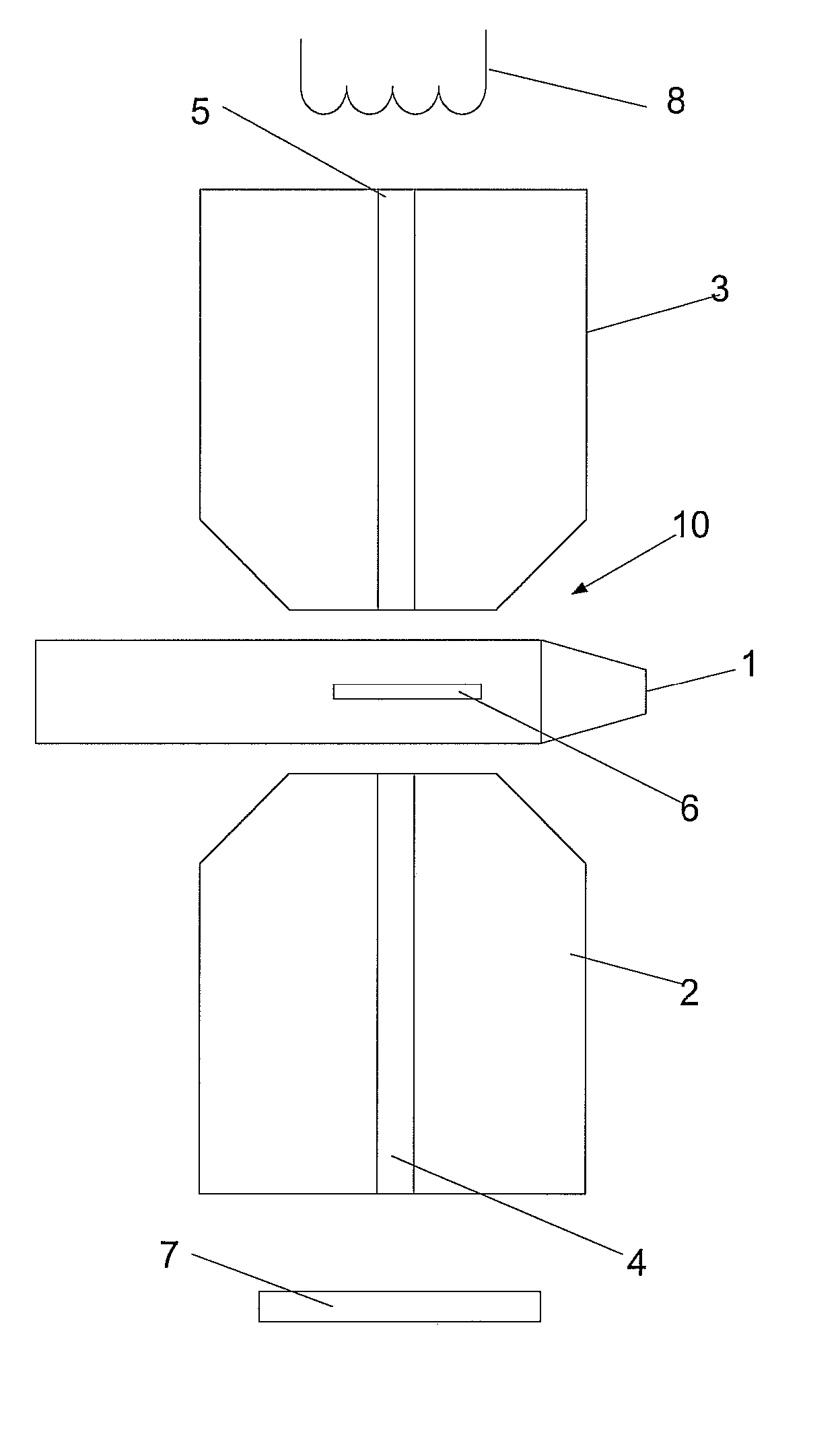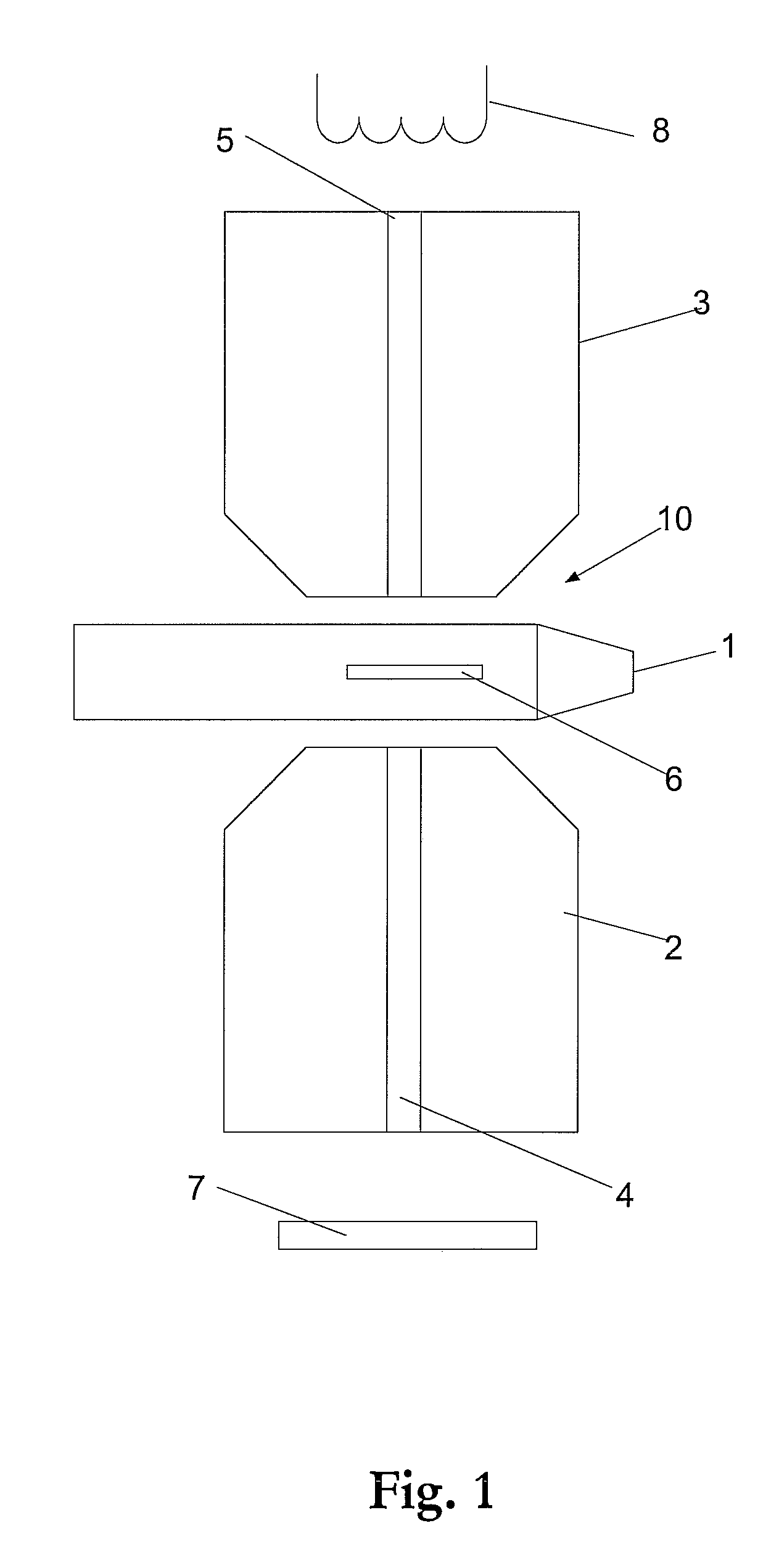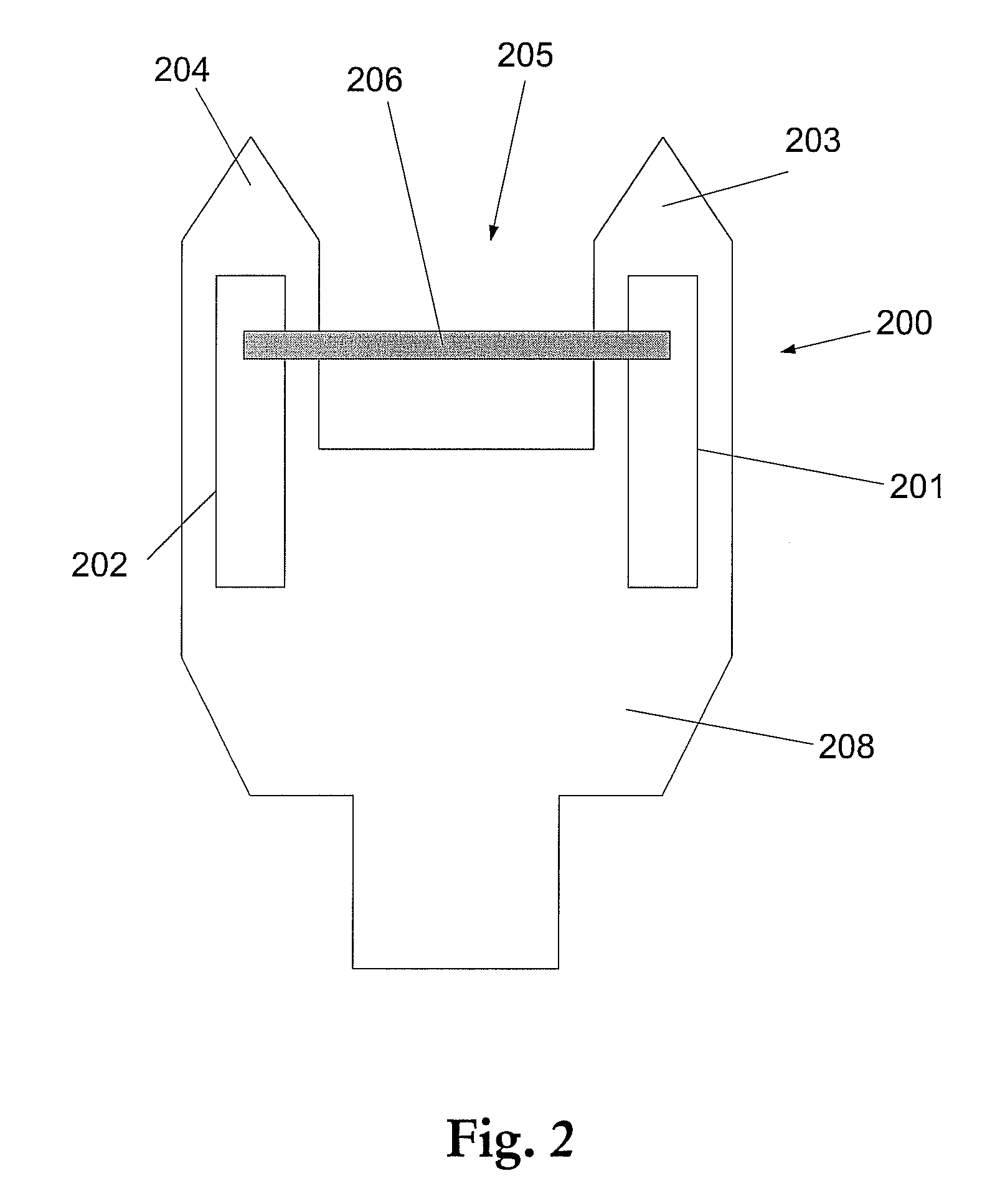Microfabricated cantilever chip
a cantilever and micro-fabricated technology, applied in the field of micro-fabricated cantilever chips, can solve the problems of putting a burden on the user, destroying or moving samples, altering samples under inspection, etc., and achieves the effect of increasing the conductivity and achieving a rather high measured resistan
- Summary
- Abstract
- Description
- Claims
- Application Information
AI Technical Summary
Benefits of technology
Problems solved by technology
Method used
Image
Examples
Embodiment Construction
[0111] In FIG. 1, reference numeral 1 generally indicates a transmission electron microscope probe holder for use in situ of a transmission electron microscope (TEM). The probe holder is arranged during operation between two electron beam lenses 2 and 3 together forming a small gap 10 there between. Through each electron beam lens 2, 3 is an opening 4, 5 for electrons to pass through. An electron beam is formed by emitting electrons from an electron emitter 8 and the electrons are steered into a beam using the electron beam lenses 2, 3. The TEM is used for imaging small structures in a sample 6 by directing the electron beam through the sample and collecting electrons with an electron collecting device 7, such as a charge coupled device (CCD) or similar technique, sometimes also a fluorescent device may be used in order to convert the electron beam image into a photon based image for optical inspection by a user of the TEM. The TEM is a complex measurement device with a vacuum insid...
PUM
| Property | Measurement | Unit |
|---|---|---|
| cryogenic temperatures | aaaaa | aaaaa |
| perimeter | aaaaa | aaaaa |
| contact resistance | aaaaa | aaaaa |
Abstract
Description
Claims
Application Information
 Login to View More
Login to View More - R&D
- Intellectual Property
- Life Sciences
- Materials
- Tech Scout
- Unparalleled Data Quality
- Higher Quality Content
- 60% Fewer Hallucinations
Browse by: Latest US Patents, China's latest patents, Technical Efficacy Thesaurus, Application Domain, Technology Topic, Popular Technical Reports.
© 2025 PatSnap. All rights reserved.Legal|Privacy policy|Modern Slavery Act Transparency Statement|Sitemap|About US| Contact US: help@patsnap.com



